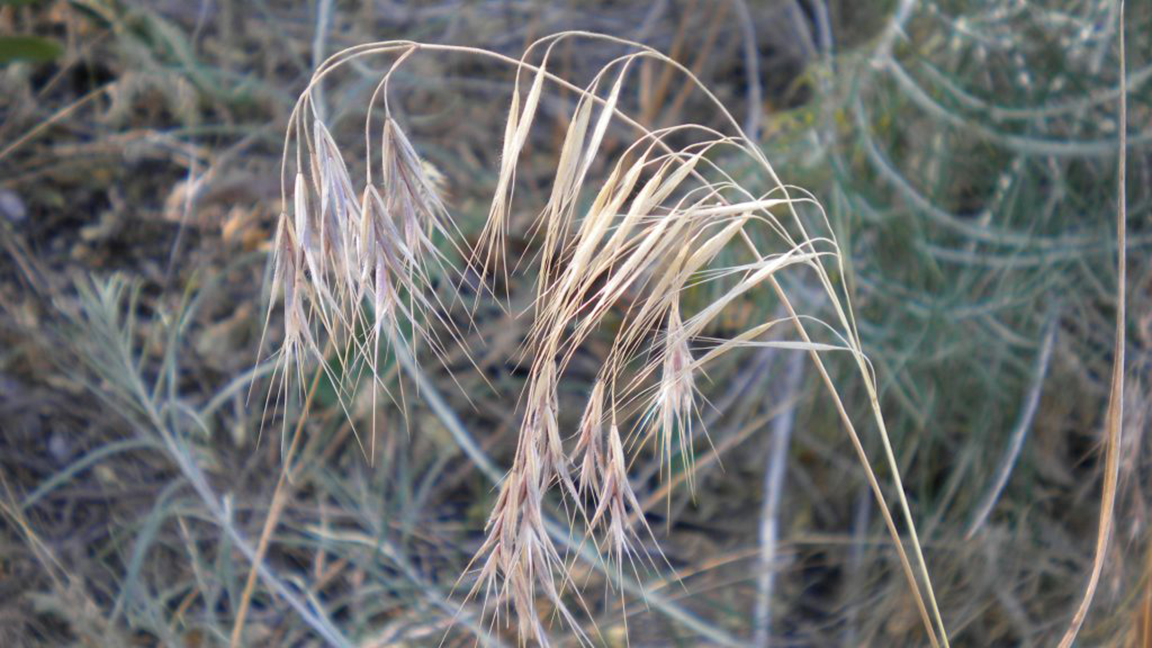The Cost of Invasives
UW releases new findings on the economic ramifications of invasive weeds in Wyoming.
December 17, 2024

Palmer amaranth. [Photo by Andrew Kniss.]
by Brooke Ortel, University of Wyoming
Ag economists and invasive weed specialists at the University of Wyoming (UW) have released a new report on the economic ramifications of 10 invasive weeds in Wyoming. The pilot study, which assesses both current and potential economic effects, was developed in response to Governor Mark Gordon’s 2020 Invasive Species Initiative Report. Collaborators include all Wyoming Weed and Pest Control districts and the Wyoming Weed and Pest Council Guiding Principles Committee.
“This report represents an important step to better understanding the impacts of invasive weeds on Wyoming’s agricultural economy and gives some insight into how bad it could be if such weeds were left unchecked,” says co-author Brian Mealor, director of the Sheridan Research and Extension Center and the Institute for Managing Annual Grasses Invading Natural Ecosystems (IMAGINE).
To estimate each weed’s statewide and county-level economic effects on agriculture, the study examined 1) current grazing and crop value losses due to infestation and 2) losses if each species were permitted to spread, unmanaged, into all potentially suitable habitat.
The 10 species analyzed in the new report are cheatgrass, hoary cress, leafy spurge, medusahead, Palmer amaranth, perennial pepperweed, Russian knapweed, Russian olive, Ventenata and yellow star thistle.
For each weed, direct economic effects were estimated as losses in cash rent for ag land currently or potentially infested. The authors found that “while current estimated statewide grazing losses are in the tens of millions of dollars annually, county-level impacts vary widely.”
Of the 10 weeds included in the study, cheatgrass poses the most economically damaging current and future threat to Wyoming agriculture. The authors estimate that the weed’s future impact may exceed $110 million annually if left unmanaged.

Cheatgrass. [Photo by Beth Fowers.]
While it may be tempting to focus on cheatgrass and other species currently of highest concern, the authors advise against this tactic.
“Preventing further spread of species with very limited range in Wyoming is a higher-leverage approach than waiting for them to have broad-reaching impacts before implementing a strategic management approach,” the report states.
In addition to direct economic effects, the pilot study also estimated the “ripple effects” of lost agricultural rent.
“Each year, invasive plants reduce the value of both forage and crop values across Wyoming. Beyond this, part of every dollar lost by an agricultural producer to weeds would otherwise be spent at the local feed store, restaurant or doctor’s office,” says Amy Nagler, research scientist in the UW Department of Agricultural and Applied Economics and co-author of the report. “Estimating these economic losses due to weed infestation is an important tool for prioritizing limited funds for control.”
The new report serves as a potential model for future studies, establishing methods for estimating the effects of individual weeds on Wyoming’s ag economy. However, the authors acknowledge that their estimates are likely quite conservative because they accounted only for economic losses due to grazing reduction. Key factors like ecosystem services, recreation, wildfire and wildlife habitat were not incorporated into the pilot study.
Opportunities for further research include consideration of these factors, as well as analysis of effects to specific crops, irrigated vs. non-irrigated cropland, parcel-level land area and use, and public vs. private rangelands.
To view a free downloadable copy of the report, visit https://bit.ly/invasive-weed-report-2024. Contact Mealor at bamealor@uwyo.edu or 307-673-2856 with questions.
Editor’s note: Brooke Ortel is writer/editor for the University of Wyoming Extension. [Lead photo by Andrew Kniss.]
Angus Beef Bulletin EXTRA, Vol. 16, No. 12-B
Topics: Management , Pasture and Forage , Sustainability
Publication: Angus Beef Bulletin


